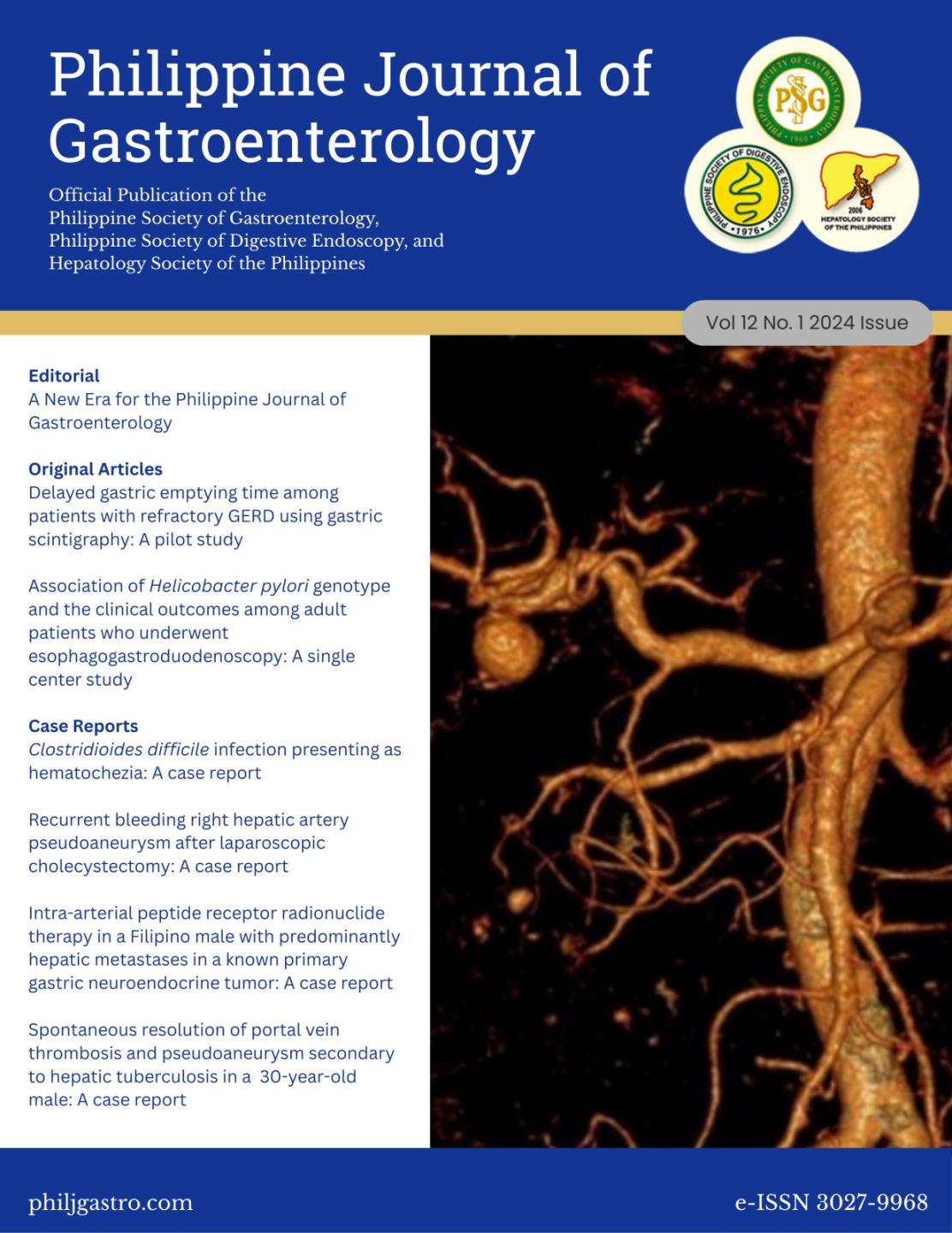Spontaneous resolution of portal vein thrombosis and pseudoaneurysm secondary to hepatic tuberculosis in a 30-year-old male: A case report
Keywords:
hepatic tuberculosis, Mycobacterium tuberculosis, portal vein thrombosis, hepatic pseudoaneurysm, endoscopic retrograde cholangiopancreatographyAbstract
Objectives: To report a case of a patient with a spontaneous resolution of his portal vein thrombosis and pseudoaneurysm following isoniazid (H), rifampicin (R), and ethambutol (E) treatment for hepatic tuberculosis, set in a tertiary government hospital.
Results: This case involves a 30-year-old male from South Cotabato, Philippines, who presented with jaundice, abdominal pain, and fever. He was initially diagnosed with hepatic abscess, nodules, and chronic portal vein thrombosis with cavernous transformation. Due to financial constraints, he delayed follow-ups and treatment, worsening his condition. Upon admission, he had severe jaundice and abdominal pain. Initial tests suggested obstructive jaundice due to common hepatic duct strictures and secondary complications. A whole abdomen CT scan showed multiple hepatic masses with calcifications. He underwent endoscopic retrograde cholangiopancreatography (ERCP), where a stent was placed to relieve bile obstruction. Sputum geneXpert revealed Mycobacterium tuberculosis, leading to the initiation of the anti-Koch regimen. His condition improved with antibiotics and hepatoprotective therapy. Later, a repeat CT scan suggested a hepatic pseudoaneurysm, but treatment continued with an HRE regimen. On follow-up, a repeat whole abdomen ultrasound revealed the resolution of the pseudoaneurysm and portal vein thrombosis with cavernous transformation, confirming that tuberculosis was the underlying cause. The patient was discharged in stable condition with an 8-month anti-TB regimen, and regular follow-ups were advised.
Conclusion: This case emphasizes the importance of a high level of suspicion when diagnosing hepatic TB, as tuberculosis is the greatest masquerader of all, particularly in high-burden regions like the Philippines. It also stresses the need for a multidisciplinary approach in managing complex hepatobiliary conditions. Although thrombectomy with anticoagulation is typically necessary for portal vein thrombosis, and hepatic artery pseudoaneurysms are generally considered irreversible, treated through coiling or surgery, this case suggests that careful medical management can lead to significant improvement and even spontaneous resolution. To our knowledge, this is the first documented case in the Philippines demonstrating spontaneous resolution of portal vein thrombosis and a pseudoaneurysm secondary to hepatic tuberculosis following anti-tuberculosis therapy. Further research is needed to understand these rare occurrences and optimize treatment strategies.
Downloads
Published
License
Copyright (c) 2025 Irson Thurs Doria

This work is licensed under a Creative Commons Attribution-NonCommercial-NoDerivatives 4.0 International License.


